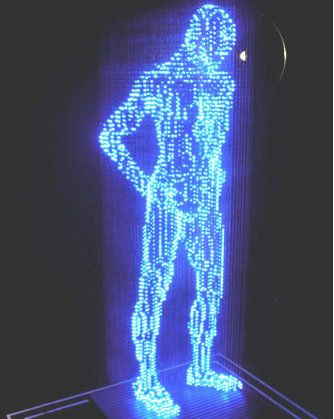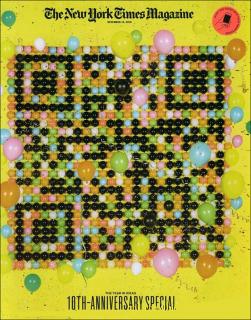
Sometime around 2008 or so a tipping point was reached: for the first time, the number of people worldwide living in cities outnumbered the number of people living in rural areas. The ‘urbanification’ of humanity will likely only continue (you can see the United Nations projections here), and so cities—their structure, their qualities, their creation, maintenance, and growth—are becoming increasingly important objects of study.
I’ve already mentioned the NY Times Magazine’s Annual Year in Ideas issue in a previous post. Included in the same issue is a full-fledged article on the work of Geoffrey West, a former physicist at Stanford and the Los Alamos National Laboratory. West has recently turned his attention away from particle physics and toward biological subjects, and done so with effect; as the article notes, one of West’s first forays was “one of the most contentious and influential papers in modern biology” which has garnered over 1500 citations since published.
The mathematical equations that West and his colleagues devised were inspired by the earlier findings of Max Kleiber. In the early 1930s, when Kleiber was a biologist working in the animal-husbandry department at the University of California, Davis, he noticed that the sprawlingly diverse animal kingdom could be characterized by a simple mathematical relationship, in which the metabolic rate of a creature is equal to its mass taken to the three-fourths power. This ubiquitous principle had some significant implications, because it showed that larger species need less energy per pound of flesh than smaller ones. For instance, while an elephant is 10,000 times the size of a guinea pig, it needs only 1,000 times as much energy. Other scientists soon found more than 70 such related laws, defined by what are known as “sublinear” equations. It doesn’t matter what the animal looks like or where it lives or how it evolved — the math almost always works.
West’s next work went along similar lines, but now the biological subject under the microscope was the city. The first and natural quantity to investigate would be something that played the role of ‘energy’ in the city, and West and his collaborator Luis Bettencourt discovered that indeed a whole host of ‘energy’ measures scaled at a sublinear rate.
In city after city, the indicators of urban “metabolism,” like the number of gas stations or the total surface area of roads, showed that when a city doubles in size, it requires an increase in resources of only 85 percent. This straightforward observation has some surprising implications. It suggests, for instance, that modern cities are the real centers of sustainability…. Small communities might look green, but they consume a disproportionate amount of everything.
Still more surprises arrived when West and Bettencourt looked at measuring not ‘energy’ in terms of infrastructure, but ‘energy’ in terms of people. When people decide to move to a city—and as the United Nations data shows, people are doing so in droves—they often do so not to decrease their expenditures, but to increase their social opportunities. Now it is hard to measure social interactions, but there are related interactions that can be measured, and interestingly enough these seem to scale the same way infrastructure does, but in the opposite direction. Social activity seems to scale in a superlinear way. All sorts of economic activities, from city-wide construction spending to individual bank account deposits, increase by 15 percent per capita when a city doubles in size. Or as West puts it, “[y]ou can take the same person, and if you just move them to a city that’s twice as big, then all of a sudden they’ll do 15 percent more of everything that we can measure.” The bad news is that the ‘everything’ is in fact everything: violent crime, traffic, and AIDS cases for example also see the same type of increase.
West and Bettencourt’s current calculations are controversial and not universally believed. (The author, Jonah Lehrer, seems fairly skeptical himself.) Nevertheless, as with the earlier biological findings, the work described here certainly looks like a very good launching point for some very valuable and much needed future analysis.








